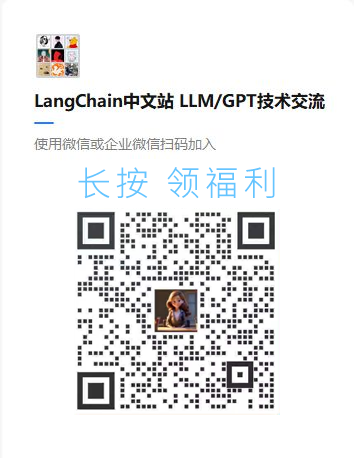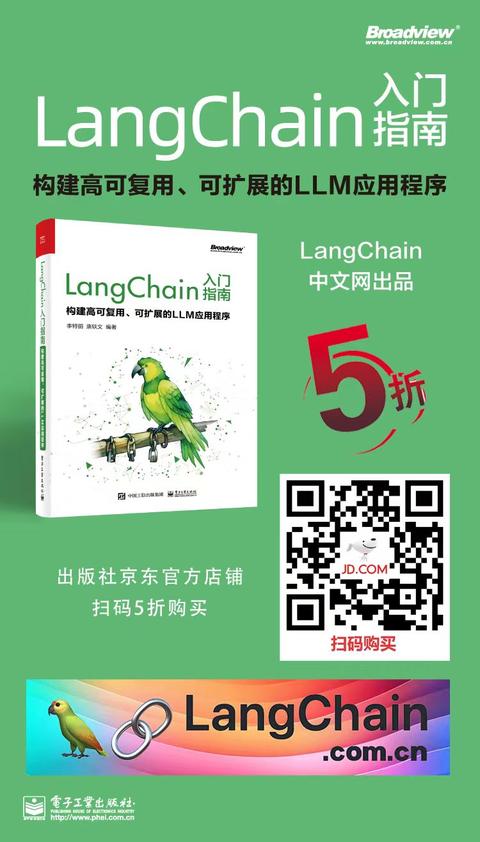如何通过并行化来总结文本
大型语言模型可以从文本中总结和提炼所需的信�息,包括大量文本。在许多情况下,特别是当文本量相对于模型的上下文窗口大小较大时,将总结任务拆分为更小的组件可能是有帮助的(或必要的)。
Map-reduce 代表了一类实现此目标的策略。其思想是将文本分解为“子文档”,并首先使用大型语言模型将每个子文档映射到单独的摘要。然后,我们将这些摘要减少或合并为一个全局摘要。
请注意,映射步骤通常是在输入文档上并行化的。当理解子文档不依赖于前面的上下文时,这种策略尤其有效。例如,在总结许多较短文档的语料库时。
LangGraph 基于 langchain-core 构建,支持 map-reduce 工作流,非常适合这个问题:
- LangGraph 允许单个步骤(例如连续的摘要)进行流式处理,从而提供更大的执行控制;
- LangGraph 的 检查点 支持错误恢复,扩展人机协作工作流,并更容易融入对话应用程序。
- LangGraph 的实现易于修改和扩展。
下面,我们演示如何通过 map-reduce 策略来总结文本。
加载聊天模型
让我们首先加载一个聊天模型:
- OpenAI
- Anthropic
- Azure
- Cohere
- NVIDIA
- FireworksAI
- Groq
- MistralAI
- TogetherAI
pip install -qU langchain-openai
import getpass
import os
os.environ["OPENAI_API_KEY"] = getpass.getpass()
from langchain_openai import ChatOpenAI
llm = ChatOpenAI(model="gpt-4o-mini")
pip install -qU langchain-anthropic
import getpass
import os
os.environ["ANTHROPIC_API_KEY"] = getpass.getpass()
from langchain_anthropic import ChatAnthropic
llm = ChatAnthropic(model="claude-3-5-sonnet-20240620")
pip install -qU langchain-openai
import getpass
import os
os.environ["AZURE_OPENAI_API_KEY"] = getpass.getpass()
from langchain_openai import AzureChatOpenAI
llm = AzureChatOpenAI(
azure_endpoint=os.environ["AZURE_OPENAI_ENDPOINT"],
azure_deployment=os.environ["AZURE_OPENAI_DEPLOYMENT_NAME"],
openai_api_version=os.environ["AZURE_OPENAI_API_VERSION"],
)
pip install -qU langchain-google-vertexai
import getpass
import os
os.environ["GOOGLE_API_KEY"] = getpass.getpass()
from langchain_google_vertexai import ChatVertexAI
llm = ChatVertexAI(model="gemini-1.5-flash")
pip install -qU langchain-cohere
import getpass
import os
os.environ["COHERE_API_KEY"] = getpass.getpass()
from langchain_cohere import ChatCohere
llm = ChatCohere(model="command-r-plus")
pip install -qU langchain-nvidia-ai-endpoints
import getpass
import os
os.environ["NVIDIA_API_KEY"] = getpass.getpass()
from langchain import ChatNVIDIA
llm = ChatNVIDIA(model="meta/llama3-70b-instruct")
pip install -qU langchain-fireworks
import getpass
import os
os.environ["FIREWORKS_API_KEY"] = getpass.getpass()
from langchain_fireworks import ChatFireworks
llm = ChatFireworks(model="accounts/fireworks/models/llama-v3p1-70b-instruct")
pip install -qU langchain-groq
import getpass
import os
os.environ["GROQ_API_KEY"] = getpass.getpass()
from langchain_groq import ChatGroq
llm = ChatGroq(model="llama3-8b-8192")
pip install -qU langchain-mistralai
import getpass
import os
os.environ["MISTRAL_API_KEY"] = getpass.getpass()
from langchain_mistralai import ChatMistralAI
llm = ChatMistralAI(model="mistral-large-latest")
pip install -qU langchain-openai
import getpass
import os
os.environ["TOGETHER_API_KEY"] = getpass.getpass()
from langchain_openai import ChatOpenAI
llm = ChatOpenAI(
base_url="https://api.together.xyz/v1",
api_key=os.environ["TOGETHER_API_KEY"],
model="mistralai/Mixtral-8x7B-Instruct-v0.1",
)
加载文档
首先我们加载文档。我们将使用 WebBaseLoader 来加载一篇博客文章,并将文档拆分为更小的子文档。
<!--IMPORTS:[{"imported": "WebBaseLoader", "source": "langchain_community.document_loaders", "docs": "https://python.langchain.com/api_reference/community/document_loaders/langchain_community.document_loaders.web_base.WebBaseLoader.html", "title": "How to summarize text through parallelization"}, {"imported": "CharacterTextSplitter", "source": "langchain_text_splitters", "docs": "https://python.langchain.com/api_reference/text_splitters/character/langchain_text_splitters.character.CharacterTextSplitter.html", "title": "How to summarize text through parallelization"}]-->
from langchain_community.document_loaders import WebBaseLoader
from langchain_text_splitters import CharacterTextSplitter
text_splitter = CharacterTextSplitter.from_tiktoken_encoder(
chunk_size=1000, chunk_overlap=0
)
loader = WebBaseLoader("https://lilianweng.github.io/posts/2023-06-23-agent/")
docs = loader.load()
split_docs = text_splitter.split_documents(docs)
print(f"Generated {len(split_docs)} documents.")
Created a chunk of size 1003, which is longer than the specified 1000
``````output
Generated 14 documents.
创建图
映射步骤
首先定义与映射步骤相关的提示词,并通过 链 将其与大型语言模型关联:
<!--IMPORTS:[{"imported": "StrOutputParser", "source": "langchain_core.output_parsers", "docs": "https://python.langchain.com/api_reference/core/output_parsers/langchain_core.output_parsers.string.StrOutputParser.html", "title": "How to summarize text through parallelization"}, {"imported": "ChatPromptTemplate", "source": "langchain_core.prompts", "docs": "https://python.langchain.com/api_reference/core/prompts/langchain_core.prompts.chat.ChatPromptTemplate.html", "title": "How to summarize text through parallelization"}]-->
from langchain_core.output_parsers import StrOutputParser
from langchain_core.prompts import ChatPromptTemplate
map_prompt = ChatPromptTemplate.from_messages(
[("human", "Write a concise summary of the following:\\n\\n{context}")]
)
map_chain = map_prompt | llm | StrOutputParser()
减少步骤
我们还定义了一个链,它将文档映射结果减少为单个输出。
reduce_template = """
The following is a set of summaries:
{docs}
Take these and distill it into a final, consolidated summary
of the main themes.
"""
reduce_prompt = ChatPromptTemplate([("human", reduce_template)])
reduce_chain = reduce_prompt | llm | StrOutputParser()
通过 LangGraph 进行 orchestration
下面我们实现一个简单的应用程序,它在文档列表上映射总结步骤,然后使用上述提示词进行减少。
当文本相对于大型语言模型的上下文窗口较长时,映射-减少流程特别有用。对于长文本,我们需要一种机制,以确保在减少步骤中要总结的上下文不超过模型的上下文窗口大小。在这里,我们实现了摘要的递归“折叠”:输入根据令牌限制进行分区,并生成分区的摘要。此步骤重复进行,直到摘要的总长度在所需限制内,从而允许对任意长度的文本进行总结。
我们需要安装 langgraph:
pip install -qU langgraph
<!--IMPORTS:[]-->
import operator
from typing import Annotated, List, Literal, TypedDict
from langchain.chains.combine_documents.reduce import (
acollapse_docs,
split_list_of_docs,
)
from langchain_core.documents import Document
from langgraph.constants import Send
from langgraph.graph import END, START, StateGraph
token_max = 1000
def length_function(documents: List[Document]) -> int:
"""Get number of tokens for input contents."""
return sum(llm.get_num_tokens(doc.page_content) for doc in documents)
# This will be the overall state of the main graph.
# It will contain the input document contents, corresponding
# summaries, and a final summary.
class OverallState(TypedDict):
# Notice here we use the operator.add
# This is because we want combine all the summaries we generate
# from individual nodes back into one list - this is essentially
# the "reduce" part
contents: List[str]
summaries: Annotated[list, operator.add]
collapsed_summaries: List[Document]
final_summary: str
# This will be the state of the node that we will "map" all
# documents to in order to generate summaries
class SummaryState(TypedDict):
content: str
# Here we generate a summary, given a document
async def generate_summary(state: SummaryState):
response = await map_chain.ainvoke(state["content"])
return {"summaries": [response]}
# Here we define the logic to map out over the documents
# We will use this an edge in the graph
def map_summaries(state: OverallState):
# We will return a list of `Send` objects
# Each `Send` object consists of the name of a node in the graph
# as well as the state to send to that node
return [
Send("generate_summary", {"content": content}) for content in state["contents"]
]
def collect_summaries(state: OverallState):
return {
"collapsed_summaries": [Document(summary) for summary in state["summaries"]]
}
# Add node to collapse summaries
async def collapse_summaries(state: OverallState):
doc_lists = split_list_of_docs(
state["collapsed_summaries"], length_function, token_max
)
results = []
for doc_list in doc_lists:
results.append(await acollapse_docs(doc_list, reduce_chain.ainvoke))
return {"collapsed_summaries": results}
# This represents a conditional edge in the graph that determines
# if we should collapse the summaries or not
def should_collapse(
state: OverallState,
) -> Literal["collapse_summaries", "generate_final_summary"]:
num_tokens = length_function(state["collapsed_summaries"])
if num_tokens > token_max:
return "collapse_summaries"
else:
return "generate_final_summary"
# Here we will generate the final summary
async def generate_final_summary(state: OverallState):
response = await reduce_chain.ainvoke(state["collapsed_summaries"])
return {"final_summary": response}
# Construct the graph
# Nodes:
graph = StateGraph(OverallState)
graph.add_node("generate_summary", generate_summary) # same as before
graph.add_node("collect_summaries", collect_summaries)
graph.add_node("collapse_summaries", collapse_summaries)
graph.add_node("generate_final_summary", generate_final_summary)
# Edges:
graph.add_conditional_edges(START, map_summaries, ["generate_summary"])
graph.add_edge("generate_summary", "collect_summaries")
graph.add_conditional_edges("collect_summaries", should_collapse)
graph.add_conditional_edges("collapse_summaries", should_collapse)
graph.add_edge("generate_final_summary", END)
app = graph.compile()
LangGraph 允许绘制图结构,以帮助可视化其功能:
from IPython.display import Image
Image(app.get_graph().draw_mermaid_png())
调用图
在运行应用程序时,我们可以流式传输图以观察其步骤顺序。下面,我们将简单地打印出步骤的名称。
请注意,由于图中存在循环,指定执行时的 recursion_limit 可能会很有帮助。当超过指定限制时,这将引发特定错误。
async for step in app.astream(
{"contents": [doc.page_content for doc in split_docs]},
{"recursion_limit": 10},
):
print(list(step.keys()))
['generate_summary']
['generate_summary']
['generate_summary']
['generate_summary']
['generate_summary']
['generate_summary']
['generate_summary']
['generate_summary']
['generate_summary']
['generate_summary']
['generate_summary']
['generate_summary']
['generate_summary']
['generate_summary']
['collect_summaries']
['collapse_summaries']
['collapse_summaries']
['generate_final_summary']
print(step)
{'generate_final_summary': {'final_summary': 'The consolidated summary of the main themes from the provided documents highlights the advancements and applications of large language models (LLMs) in artificial intelligence, particularly in autonomous agents and software development. Key themes include:\n\n1. **Integration of LLMs**: LLMs play a crucial role in enabling autonomous agents to perform complex tasks through advanced reasoning and decision-making techniques, such as Chain of Thought (CoT) and Tree of Thoughts.\n\n2. **Memory Management**: The categorization of memory into sensory, short-term, and long-term types parallels machine learning concepts, with short-term memory facilitating in-context learning and long-term memory enhanced by external storage solutions.\n\n3. **Tool Use and APIs**: Autonomous agents utilize external APIs to expand their capabilities, demonstrating adaptability and improved problem-solving skills.\n\n4. **Search Algorithms**: Various approximate nearest neighbor search algorithms, including Locality-Sensitive Hashing (LSH) and FAISS, are discussed for enhancing search efficiency in high-dimensional spaces.\n\n5. **Neuro-Symbolic Architectures**: The integration of neuro-symbolic systems, such as the MRKL framework, combines expert modules with LLMs to improve problem-solving, particularly in complex tasks.\n\n6. **Challenges and Innovations**: The documents address challenges like hallucination and inefficient planning in LLMs, alongside innovative methods such as Chain of Hindsight (CoH) and Algorithm Distillation (AD) for performance enhancement.\n\n7. **Software Development Practices**: The use of LLMs in software development is explored, particularly in creating structured applications like a Super Mario game using the model-view-controller (MVC) architecture, emphasizing task management, component organization, and documentation.\n\n8. **Limitations of LLMs**: Constraints such as finite context length and challenges in long-term planning are acknowledged, along with concerns regarding the reliability of natural language as an interface.\n\nOverall, the integration of LLMs and neuro-symbolic architectures signifies a significant evolution in AI, with ongoing research focused on enhancing planning, memory management, and problem-solving capabilities across various applications.'}}
下一步
查看 LangGraph 文档 以获取有关使用 LangGraph 构建的详细信息,包括关于 LangGraph 中 map-reduce 细节的 本指南。
请参阅摘要 操作指南 以获取其他摘要策略,包括针对较大文本量设计的策略。
另请参阅 本教程 以获取有关摘要的更多详细信息。

